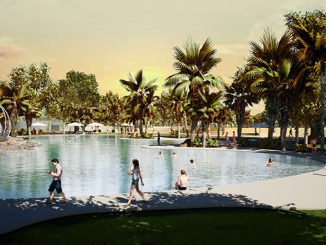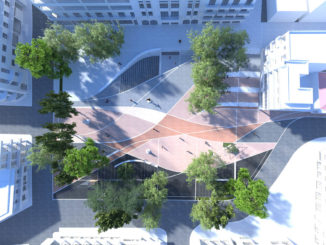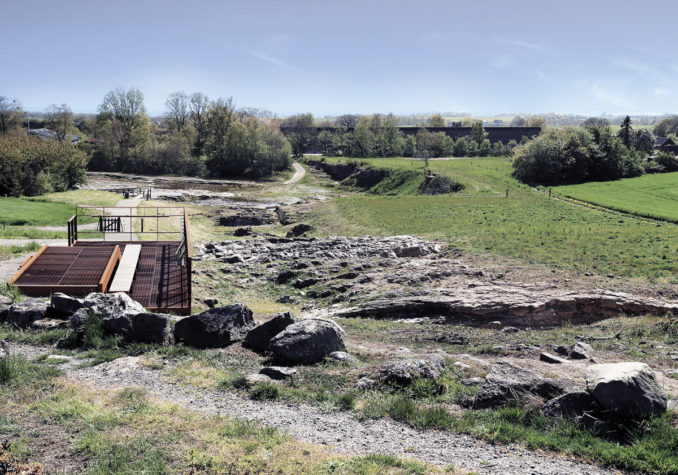
Lines in the Landscape in Aakirkeby on the Danish island of Bornholm consists of a 10 km connected path network through rare geological features, spanning over a period of 1 billion years. Unique nature and cultural history are supplemented with communication and orientation markers.
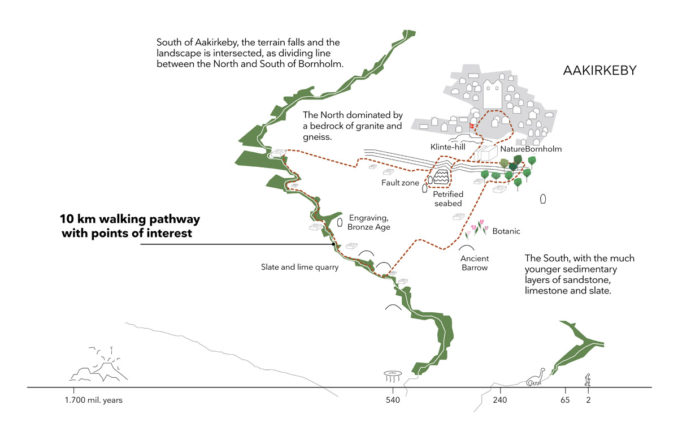
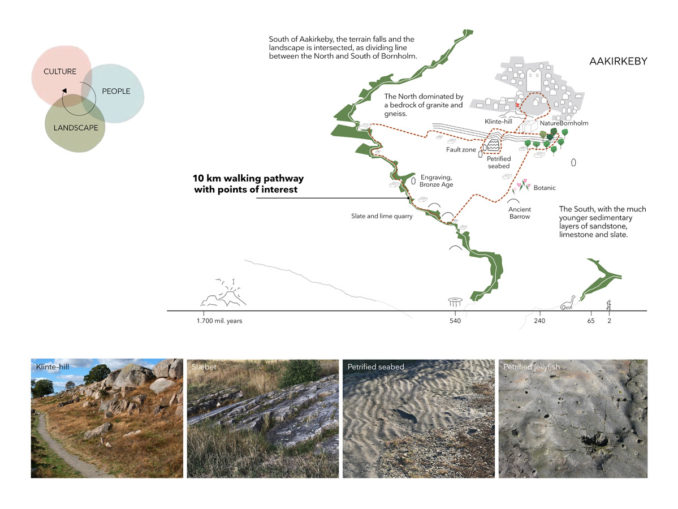
South of Aakirkeby, the terrain falls and the landscape is intersected, as dividing line between the north of Bornholm, dominated by a bedrock of granite and gneiss, and the south, with the much younger sedimentary layers of sandstone, limestone and slate. At Klintebakken, one can cross over a timespan of over a billion years in one single step.
The project encourages recreational experiences, exercise, and outdoor activities, and encourages locals, visitors, and tourists to explore Aakirkeby’s landscape, whilst also bridging the museum NaturBornholm’s publicity work with voluntary nature guides.
The proces had a continuous red thread through the project’s mobilisation, stakeholder engagement, idea development, on-site tests of ideas, execution, communication and use. The red thread is The Lines of the Landscape – a shared tale of connecting city and nature together, of uniting people and landscape.
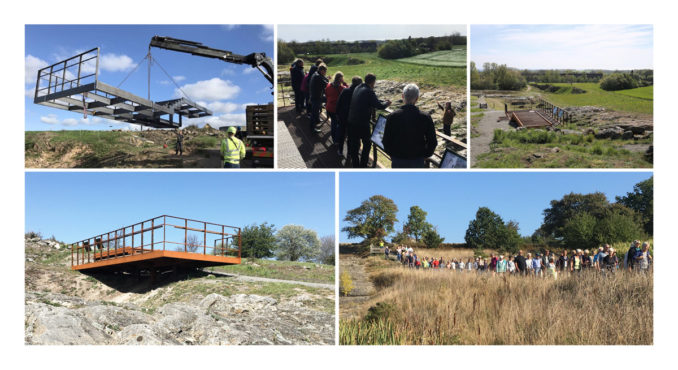
Innovation
Social cohesion in Aakirkeby
The project is an example of the SDGs #11, Cities for the future. The focal point of the project is innovative, inclusive, and sustainable planning with a collaborative approach to identifying and solving problems.
Furthermore, focus has been on locally adapted solutions, securing natural and cultural capital with conservation and visibility, linking the city and the landscape and providing access to green areas which contribute to the physical and mental health of citizens. Voluntary ratified public access agreements with private landowners have played a significant role in the project’s process and development.
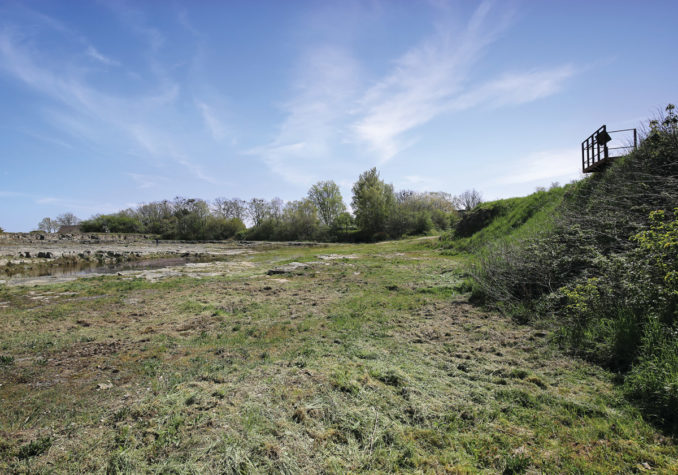
Network and collaboration
Bjarne Westerdahl, former chairman of South Bornholm’s tourist and business association and local grassroots, got the idea in 2013 for the Lines in the Landscape project – as an invitation into Aakirkeby’s special geological features, which are quite different from Bornholm’s popular coastal towns.
Bjarne mobilised a steering committee of local experts with long-standing knowledge of Aakirkeby’s geology, nature and cultural history, as well as NaturBornholm, and invited RUBOW architects into the collaboration to extract, visualise and communicate the steering committee’s many ideas into one common narrative.
The common narrative of Lines in the Landscape received broad support at a large public meeting, together with voluntary agreements with landowners along the route of the path, and the establishment of an operational team of volunteers for path system maintenance. The cooperation, the steering committee’s engagement, Bjarne’s persistence, and the municipality’s involvement and drive in relation to dialogue with conservation authorities, released a donation from the Nordea Fund, and after which several other donations followed. Then began an exploratory, collaborative sketching process and field work with mobile cranes at the site, where locations and orientation of points of interest were determined, together with the steering committee. The project was inaugurated on May 16th of 2019 with a town party and walks in the landscape, attended by locals, stakeholders and foundations. The project is an example of how mobilisation of local networks and action by professional and local forces can have a major impact on the cohesion and attractiveness of a town.
Design
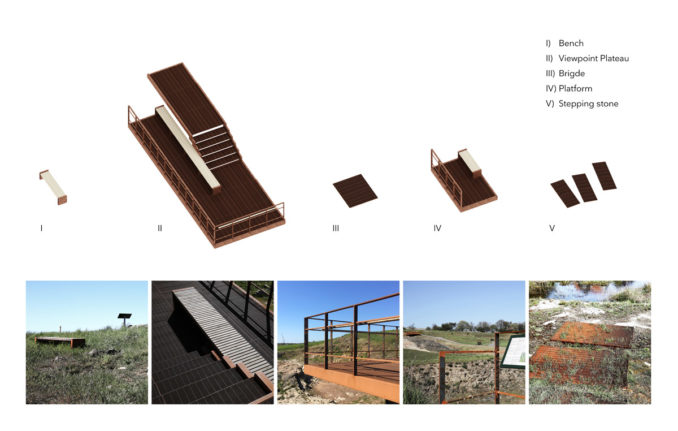
Lines in the Landscape are connecting people and landscape, city and nature. The path network provides exercise routes of different lengths, and accommodates access for walkers, cyclists and those with special accessibility needs.
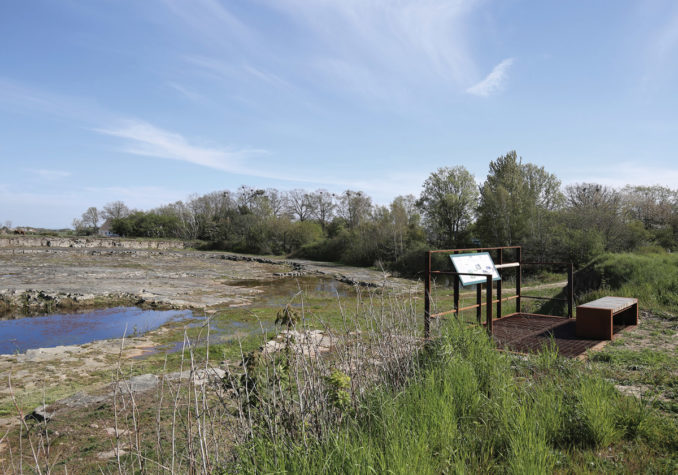
The attractions along the route are made visible throughout the path’s length, with information boards and QR codes, and at key points of interest physical interventions are established, which collect and present Lines in the Landscape.
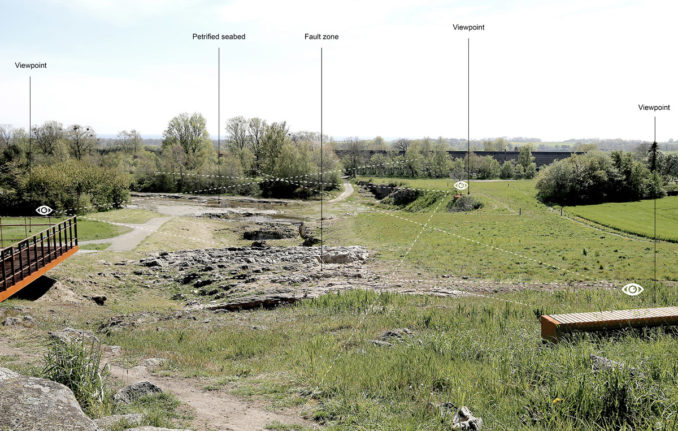
The path network links the features of the landscape together, and is for the benefit of both locals, neighbouring towns, school children from all over the country as well as national and foreign tourists.
Implementation
Making the invisible visible, with respect for natural heritage.
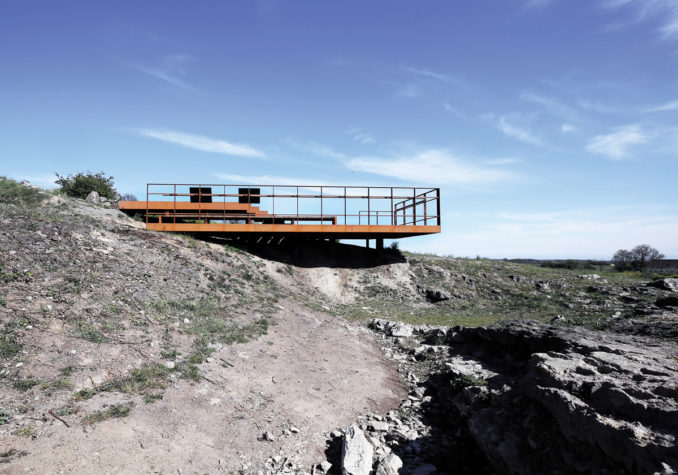
The platforms are designed in one piece, which are hoisted into place and grounded with a number of slim point foundations, which result in the platform hovering above the landscape. They are made from corten steel, a durable material processed by a local machinery factory.
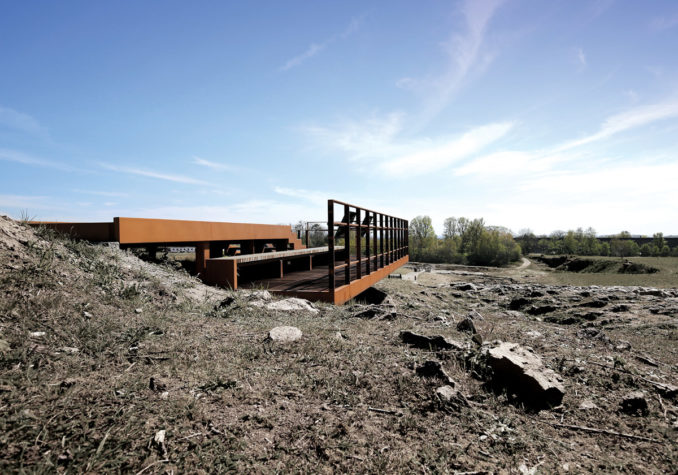
The steel is at the same time a contrast to the natural stone, whilst binding the present day to the past, referring to the machinery which before preservation of the landscape, extracted this stone. The idea is that the platform could be replaced with the least possible impact on the landscape, and that resources are reused elsewhere in the future.
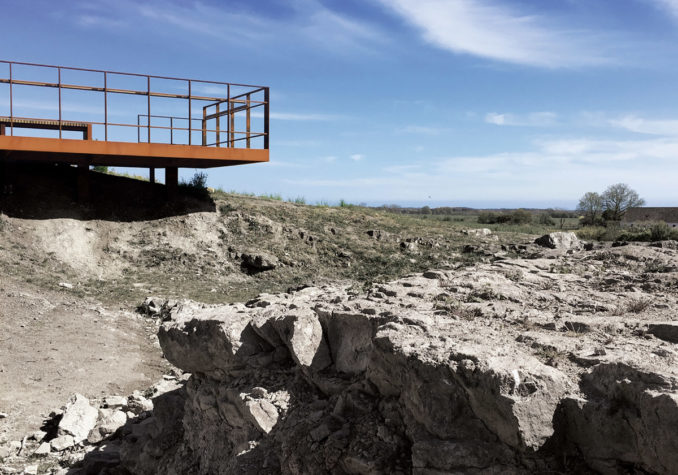
Shortlisted Project in the Built – Small category of the 2020 WLA Awards
Lines in the Landscape
Location Aakirkeby, Bornholm, Denmark
Project credits
Landscape Architect RUBOW arkitekter
Engineer NJ Cph
Cooperations SYTE, NaturBornholm
Client Regional municipality of Bornholm
Photo credits Stine Poulsen
Funds The Nordea Fund
Den A. P. Møllerske Støttefond, Sparekassen Bornholms Fond, Bornholms Brand, Brdr. Larsens Legat, Vanførefonden, Friluftsrådet, Fritid og Kultur Lokalrådet

